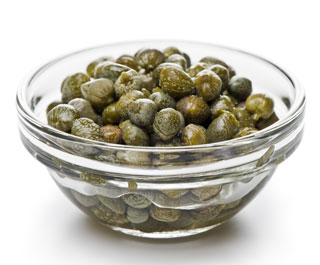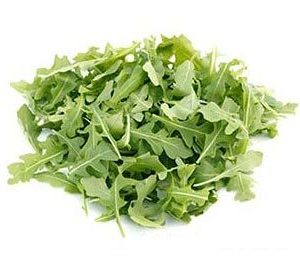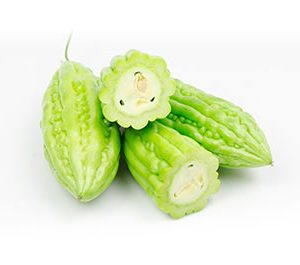Capers are great additions to sandwiches, pastas and salad dressings, lending recipes their acidic yet delightful flavor. But while they’re a common sight across various cuisines, not a lot of people understand how capers are made or where they come from. Capers usually come in glass jars in grocery and health food stores, and are never used fresh. Rather, they are pickled or cured with salt.
What Are Capers?
Capers are actually pickled immature flower buds of the Capparis spinosa bush. These plants are easily distinguishable in the wild for their thorny appearance and their beautiful white or pink flowers with purple stamens. While these flowers are extremely beautiful, capers usually need to be harvested before they can even appear or bloom.
If these flowers are allowed to mature and be pollinated, they develop into caperberries. These fruits usually grow to the size of olives and are filled with multiple small seeds, which grow bigger as the berry matures. Just like capers, caperberries are prepared by brining or curing, lending them a rather similar flavor. However, it’s been said that capers have a more floral and delicate texture and taste.
The Capparis spinosa plant has also been used throughout history for pharmacological purposes. In ancient Egypt, the root of the caper plant was used to help manage liver and kidney diseases, while ancient Romans used it to help alleviate paralysis. Other illnesses that the Capparis spinosa plant was used for include toothache, fever, headache, painful menstruation, rheumatism and sciatica.
Where Do Capers Come From?
Capers, which originally thrived in the Mediterranean region, are now cultivated in different parts of the world. Today, the top producers of capers are Africa, Spain and Italy. While caper cultivation is now possible in various domestic settings, these plants are usually found in the wild in hardy and harsh environments. The caper plant is accustomed to extreme climates, thriving best in intense daylight. However, it does not do well in cold climates and usually has trouble growing in the frost.
Capers may be harvested daily from well-established shrubs, with the smallest buds being deemed more valuable. Because of the variations in sizes, capers may be divided into six categories, namely:
| Nonpareil | Less than 7 millimeters (mm) |
| Surfines | 7 to 8 mm |
| Capucines | 8 to 9 mm |
| Capotes | 9 to 11 mm |
| Fines | 11 to 13 mm |
| Grusas | More than 13 mm |
What Do Capers Taste Like?
If you’ve eaten dishes that contain capers, you might be familiar with their sharp, tangy and salty flavor. Due to their distinct and often overpowering flavor, some people consider them to be an acquired taste. For some, capers taste salty and acidic, while others note them to be a little lemony, which make them good additions to pasta sauces to provide a flare of flavor.
Health Benefits of Capers
While capers are small, they’re packed with essential vitamins and minerals. They are also rich in alkaloids, flavonoids, terpenoids and tocopherols, which play an important role in regulating cellular enzyme function, inflammatory responses and other important body functions. Some of the properties of capers you may benefit from include:
- Diuretic and antihypertensive — A 2007 animal study published in the American Journal of Pharmacology and Toxicology showed that Capparis spinosa extract helped increase urinary sodium and potassium excretion, leading to lowered blood pressure levels.
- Anti-inflammatory — Two studies from BioMed Central show that capers contain compounds that may help suppress interleukin-17 and promote interleukin-4 expression, which are important factors in easing or stopping inflammation from occurring. They also exhibit chondroprotective properties that may rival indomethacin, a nonsteroidal anti-inflammatory drug (NSAID) typically prescribed for pain and swelling.
- Antidiabetic — In a 2017 animal study from the Avicenna Journal of Phytomedicine, researchers found that the aqueous extract of the Capparis spinosa plant contains antihyperglycemic properties, which may positively impact diabetes patients by regulating glucose production and restoring insulin sensitivity.
What Are Possible Substitutes for Capers?
If capers are not available in your pantry or if you’re not very keen on using them in your recipes, you can always substitute them with the following:
- Chopped green olives— Like capers, olives are preserved through brining or curing. This gives them a salty flavor similar to what capers are well known for. Green olives contain high amounts of vitamin A, which may benefit you if you decide on this alternative. However, make sure that you choose olives that were fermented in salt and not the lye-brined ones, as this process leaves an unpleasant chemical aftertaste.
- Pickled nasturtium seeds — Sometimes referred to as poor man’s capers, these seeds have a flavor that is similar to capers when pickled and prepared the right way. In fact, a 1987 article from The New York Times notes that nasturtium seeds may be the most successful alternative to the shortage of capers because of the capric acid they contain.
While the texture and flavor of the recipes might change without the signature saltiness of capers, these substitutes may bring their own twists to your dish.
Nutrition Facts About Capers You Should Know
Capers are rich in calcium, magnesium, potassium, folate and vitamins A and K. It also has vitamin C, niacin, iron, phosphorus and zinc in trace amounts. If you’re trying to keep track of your nutrient levels, it’s always a good idea to monitor your foods’ nutritional facts. To help you with this, here’s a table for the nutritional content of capers:
| Capers
Per 100 grams |
|
| Calories | 23 kcal |
| Total Fat | 0.86 g |
| Saturated Fat | 0.233 g |
| Cholesterol | 0 |
| Carbohydrates | 4.89 g |
| Fiber | 3.2 g |
| Calcium | 40 mg |
| Iron | 1.67 mg |
| Magnesium | 33 mg |
| Phosphorus | 10 mg |
| Potassium | 40 mg |
| Vitamin C | 4.3 mg |
| Folate | 23 µg |
| Vitamin A | 7 µg |
| Vitamin K | 24.6 µg |
Capers: The Tangy Way to Regulate Blood Sugar
As mainstays in Italian cuisine, capers are a favorite for their distinct tangy and salty taste, adding a new layer of flavor to numerous dishes, but aside from their culinary use, capers are also worth something in the realm of health. Capers contain numerous flavonoids, minerals and vitamins that may help you maintain good health. Their anti-inflammatory, antihypertensive and antidiabetic properties may even assist in keeping certain conditions at bay.
Frequently Asked Questions (FAQs) About Capers
Q: Are capers good for you?
A: While capers may not look like much because of their small package, these flower buds can provide you with a variety of vitamins and minerals, such as vitamin A, vitamin C, magnesium and potassium. Capers also contain compounds that exhibit anti-inflammatory and antihypertensive properties.
Q: What is the flavor of capers?
A: Because of the brining and pickling process, capers have a slightly acidic and salty flavor. Their distinct flavor and aroma can complement a variety of dishes, which explains their popularity in numerous cuisines.
Q: Can you eat capers straight from the jar?
A: You cannot eat capers straight from the jar. While they don’t require cooking, capers need to be rinsed before eating to lessen the vinegary flavor.
Q: Can you cook capers?
A: Yes. Capers can be eaten either raw or cooked. If you’re going to be cooking with capers, you can add them to pasta and salsas. You may also fry capers to add a crispy garnish to salads or wherever you want to add them.
Q: Are capers a fruit or vegetable?
A: Capers do not fall under either of these categories, as they are actually the immature flower buds of the Capparis spinosa plant. They are closer to being seeds because caperberries are often regarded as the plant’s fruit.







Reviews
There are no reviews yet.